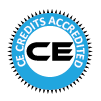
Juliane Leonhardt Amar
University of Geneva, Switzerland
Title: Cavity preparation, and restoration repair/debonding with lasers
Biography
Biography: Juliane Leonhardt Amar
Abstract
Dental treatment in young children and anxious patients is difficult because of limited cooperation. Fear of anesthesia, of the drill and of noise related to treatment result in anxiety a negative perception of the dental experience. The erbium yag laser allows cavity preparation without two of these main causes of dental fear. The localized pulsated ablation of hard tissue occurs through micro-explosions due to vaporization of water created by the laser through a sapphire which remains at 2mm of the targeted tissue thus no vibrations are felt. There is no transmission of the heat towards the pulp since the effect is very localized thus no or little pain is experienced. Laser cavity preparation is very useful in pediatric dentistry for treatment of caries in primary teeth as well as for sealants and preventive resin restorations. Children accept and often prefer this new way of treatment for the reasons mentioned. In the permanent dentition, small cavities in the posterior segments and treatment of anterior teeth are also ideal for laser treatment. Other indications include eliminating composite material and making reparations. The selected substance is ablated and then laser etched which allows conditioning for bonding. It is also possible to debond ceramic restorations such veneers because the laser is absorbed in the composite but not in ceramic. Another major advantage of the the erbium yag includes the decontamination of the tissues. The smear layer of dentin is eliminated and the carious tissue is sterilized. Thus primary tooth pulpotomies can be avoided in deep caries. Laser cavity preparation saves time and is interesting from an ergonomic point of view. It is possible to substitute conditioning with phosphoric acid by laser etching which takes very little time in comparison. Only one hand piece is necessary for the entire preparation. Finally, tooth substance removal is very conservative and minimally invasive with the laser, and caries can be evicted selectively.

